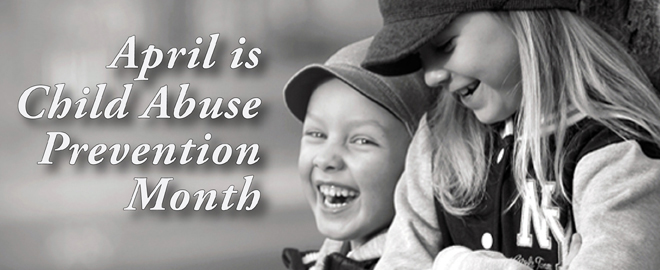
BOSTON, Mass., Apr. 29, 2022―Voice of the Faithful has published the first independent, online review of all U.S. Roman Catholic dioceses’ level of compliance with child protection and safe environment guidelines. The average overall score was 67%, with the most frequently achieved score 63.5%. Although some dioceses did well, no diocese achieved 100%, and three dioceses scored in the 20s.
Click here to read the entire report …
The study is the first independent analysis of child protection and safe environment policies in all U.S. dioceses. VOTF operates independently of the Church’s institutional structure, and the study is not an audit like those conducted by the U.S. Bishop’s National Review Board. Called “2022 Report: Measuring Abuse Prevention and Safe Environment Programs as Reported Online in Diocesan Policies and Practices,” the report is being released in April because the month is designated in the United States as National Child Abuse Prevention Month. The report’s conclusions include:
The breadth of clergy sexual abuse cases within the Church indicates that historical responses to accusations of abuse by the hierarchy were inadequate; those responses protected the reputation of the institution over supporting victims and preventing further child abuse within the Church. The hierarchical construct of privileged, secretive, unaccountable, male-only institution provides the backdrop that foments a culture of leaders who enabled the protection of the abusers and church leadership above the victims’ best interests and suffering of children. Unchanging defense of this already damaged institution ignores the need to remedy faulty structures, such as bishops’ deficient adherence to their own standards, as well as a lack of urgency and decisive actions that would demonstrate their professed resolve to protect and heal.
A few recent examples illustrating the report’s conclusions include: former Albany Diocese leader Bishop Howard Hubbard’s admission the diocese regularly moved priests accused of sexually abusing minors among parishes without informing police, victims’ families or parishioners; Portugal’s investigation that received 290 church sex abuse claims within 90 days with many more expected; and similar recent investigations in Germany, Switzerland, France and Spain; the Pennsylvania grand jury report in 2018; and other investigations dating back to The Boston Globe’s report on clergy abuse in the Boston Archdiocese in 2002, which brought about VOTF.
“The Church most often claims such investigations reveal just historic abuse,” said Patricia T. Gomez, VOTF trustee and Protection of Children Working Group co-chair. “But our report, as an indication of commitment to child protection, does not show that widespread cultural change toward safer environments for children has taken place, and we won’t know the extent of present abuse for some time because victims typically don’t report it for decades.”
To conduct this study, VOTF reviewers studied 177 websites, those of 176 U.S. Roman Catholic dioceses and the Archdiocese for the Military, USA. Reviewers used a worksheet that included 33 questions in the following 10 categories: policy; code of conduct; reporting abuse; background checks; prevention, education, and training; contact information; annual audit reporting; diocesan review boards; list of accused clergy; and victim assistance. The study used diocesan websites because the internet is so widely used for information, and the extent to which a diocese’s website provides safe environment policies and procedures is an indication of the bishop’s commitment to protecting children and preventing further sexual abuse by clergy.
“This (report) will surely promote a constructive conversation about how to monitor and improve child safety in the church environment,” said David Finkelhor, Ph.D., who is professor of sociology at the University of New Hampshire, director of the Crimes against Children Research Center and co-director of the Family Research Laboratory. “The report is sensible, systematic and well-conceived.”
The five highest scoring dioceses were Harrisburg, Pennsylvania, 95.5%; Winona-Rochester, Minnesota, 93.5%; Venice, Florida, 92.5%; Baltimore, Maryland, 92.5%; and Richmond, Virginia, 89.5%. The five lowest scoring dioceses were Shreveport, Louisiana, 22.5%; Lubbock, Texas, 23.5%; Corpus Christi, Texas, 27%; Military Services, 38.5%; and Colorado Springs, Colorado, 41.5%.
The VOTF report made the following points:
- Diocesan safe environment webpage content must align with dioceses’ child protection policies. Any lack of consistency calls into question the diligence afforded to safe environment and child protection efforts and diocesan commitment to transparency.
- Comprehensive abuse prevention efforts must include criminal background checks of all employees, clergy, and volunteers, as well as mandatory abuse prevention education and training for all groups.
- Dioceses must fully disclose credibly accused offenders’ information, such as name, current status, past assignments, etc.
- Diocesan review boards must ensure that Charter for the Protection of Children and Young People-related policies and procedures are current and clearly stated.
- Mandatory participation in annual audits and a time-limited period for correction of deficiencies must be enforced.
The report concluded on the particularly important role of parishioners in child protection: “There is a key role for parishioners to ensure the protection of children in our parishes. Parishioners should work with diocesan and parish safe environment personnel to bolster safety guidelines at the diocesan level and ensure that safety measures are carried out in their faith communities. Alive in the life of Jesus, the entire People of God can transform into a sacramental community where children, youth, and the vulnerable are nurtured and protected in safe environments.”
Click here to go to Voice of the Faithful’s Child Protection webpage …
Voice of the Faithful’s® mission is to provide a prayerful voice, attentive to the Spirit, through which the Faithful can actively participate in the governance and guidance of the Catholic Church. VOTF’s goals are to support survivors of clergy sexual abuse, to support priests of integrity, and to shape structural change within the Catholic Church. More information is at www.votf.org.
Voice of the Faithful News Release
Apr. 29, 2022
Contact: Nick Ingala, nickingala@votf.org, (781) 559-3360
